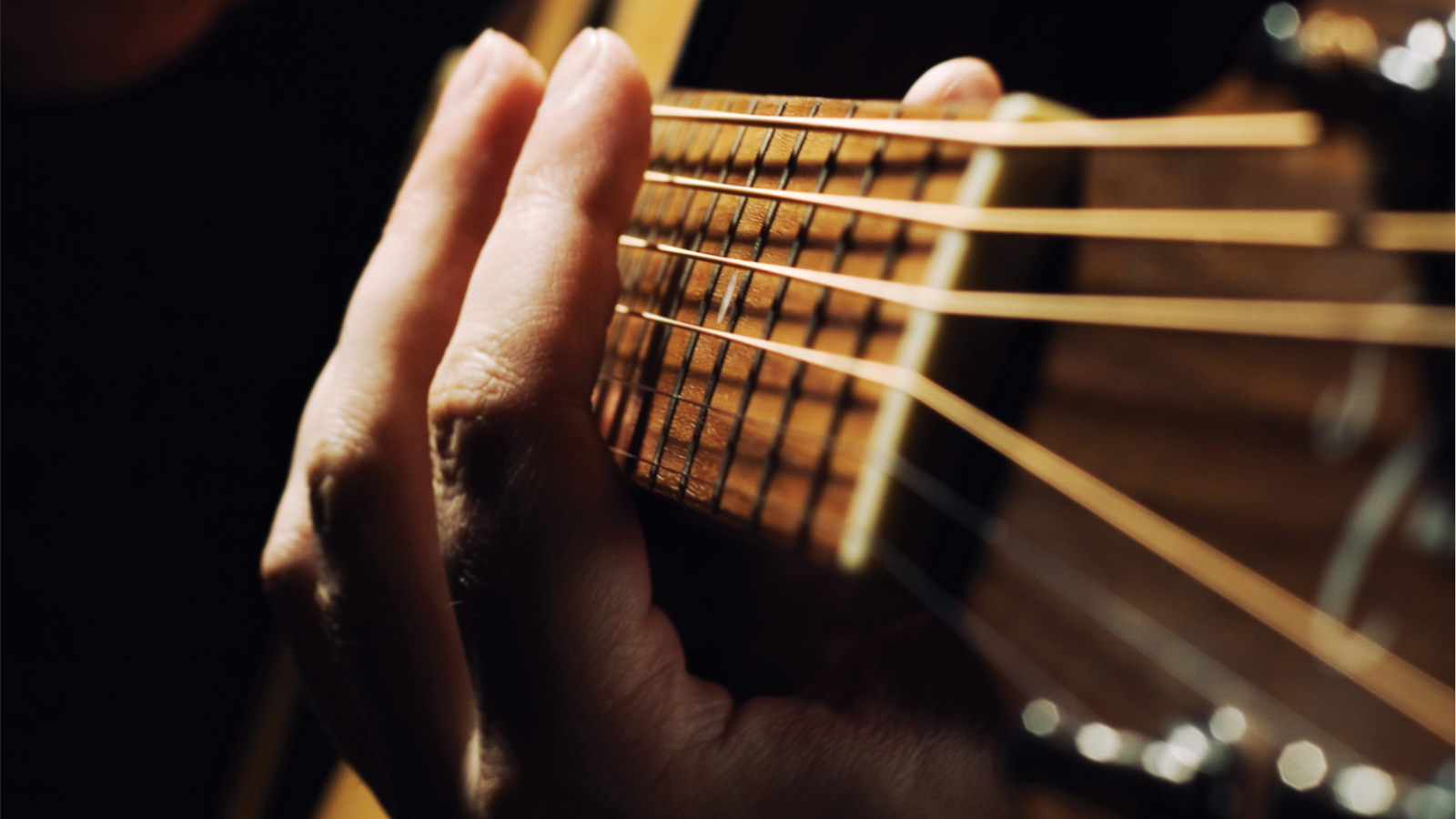Create Music That Sounds Fresh and Fun With This Simple Chord Concept
How to liven up progressions by combining open and closed chords

As players, we tend to hang around in one fretboard position as much as possible before switching to another, and that’s especially true when we play in open position.
But mixing positions instantly enriches our possibilities, especially when it comes to getting out of cowboy strumming mode in the lower register.
Just the movement of the fretting hand from one position to another offers new rhythmic possibilities, and the harmonic opportunities that come along for the ride are worth the effort.
Start Open and Then Close
To show how effective combining open and closed chords can be, let’s start with some simple examples.
Play an open C cowboy chord. Then slide your first finger up to the fifth fret, with the focus on the second, third and fourth strings, so that there’s a partial barre chord of the C major triad with the 5th in the bass.
Extra credit for including your third finger on the fifth string and landing at the seventh fret along with the partial barre above, putting the 3rd in the bass.
Now add a rhythm of any kind in common time, then waltz time, or whatever floats your boat.
Next, try the same concept using an open D chord along with the partial barre, with the first finger at the seventh fret. Then try open E, along with a slide of the first finger up to the ninth fret, and finally bounce from open G to the barre at the 12th fret.
Play around with these a bit. See how easy it is to make musical hay out of such a simple chord concept?
Start Closed and Then Open
Gliss a bit into a G barre chord at the third fret, and then bounce back to an open G. Then try going from the G barre to, say, an open Cmaj7, or to an open D chord, or perhaps one and then the other.
Once you can do it smoothly, add a rhythm. Try incorporating some sort of pull-off in the open-position chord to help find a rhythm. For example, start on open C before pulling off on the second string, from the C at the first fret to the open B string, to create the Cmaj7, before sliding back up to the barred G.
Pulling off of F# to the open E at the top of the open D chord works easily as well to create a Dsus2.
Get a bit more adventurous and slide up to the A barre chord at the fifth fret or the B at the seventh.
Now try putting it all together using a couple of open chords with a pull-off or two, plus a couple of barre chords, into some sort of progression with a snappy rhythm, which should be readily available just because of the bouncing back and forth between positions.
Add Single-Note Runs
Get creative by adding a few single-note licks at either or both ends of the equation. Don’t think too hard about it; just play whatever falls under your fingers easily.
By bouncing between open chords and closed chords as far up the neck as you can manage – along with a few hammer-ons, pull-offs and single-note runs – you should find yourself creating music that sounds fresh and fun.
Slide players do this all the time in open tunings; consider Jimmy Page’s opening riff on “Travelling Riverside Blues.”
This lesson should open up all sorts of hip possibilities for you. Try the concept on your favorite cover tunes to liven them up, or start from scratch and see what you come up with.
Combining open and closed chords is a simple and effective way to mix things up.
Get The Pick Newsletter
All the latest guitar news, interviews, lessons, reviews, deals and more, direct to your inbox!
Jimmy Leslie has been Frets editor since 2016. See many Guitar Player- and Frets-related videos on his YouTube channel, and learn about his acoustic/electric rock group at spirithustler.com.
“Write for five minutes a day. I mean, who can’t manage that?” Mike Stern's top five guitar tips include one simple fix to help you develop your personal guitar style
"It’s like you’re making a statement. And you never know where it’ll lead." Pete Thorn shares the tip that convinced Joe Satriani he was the right guitarist for the SatchVai Band










